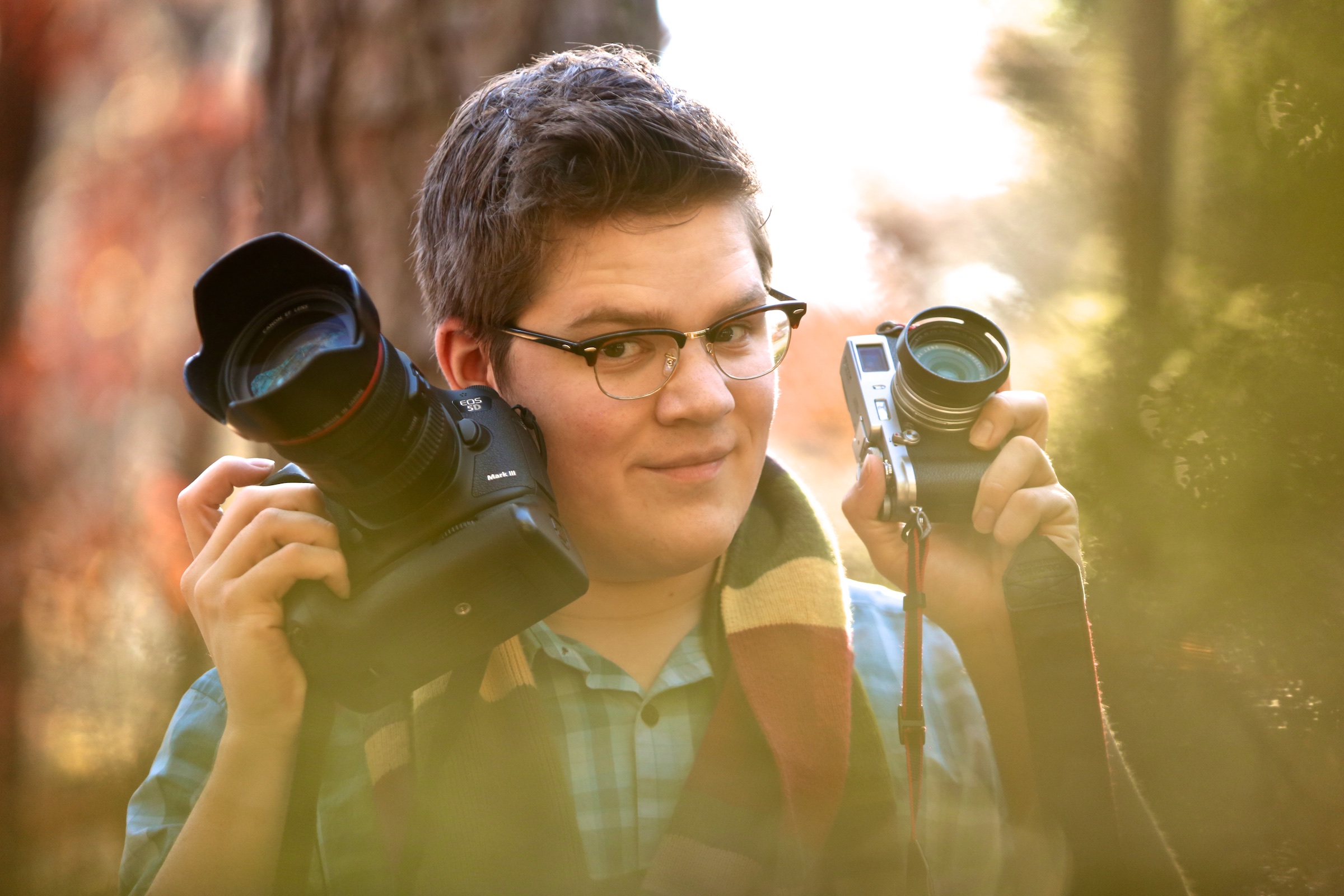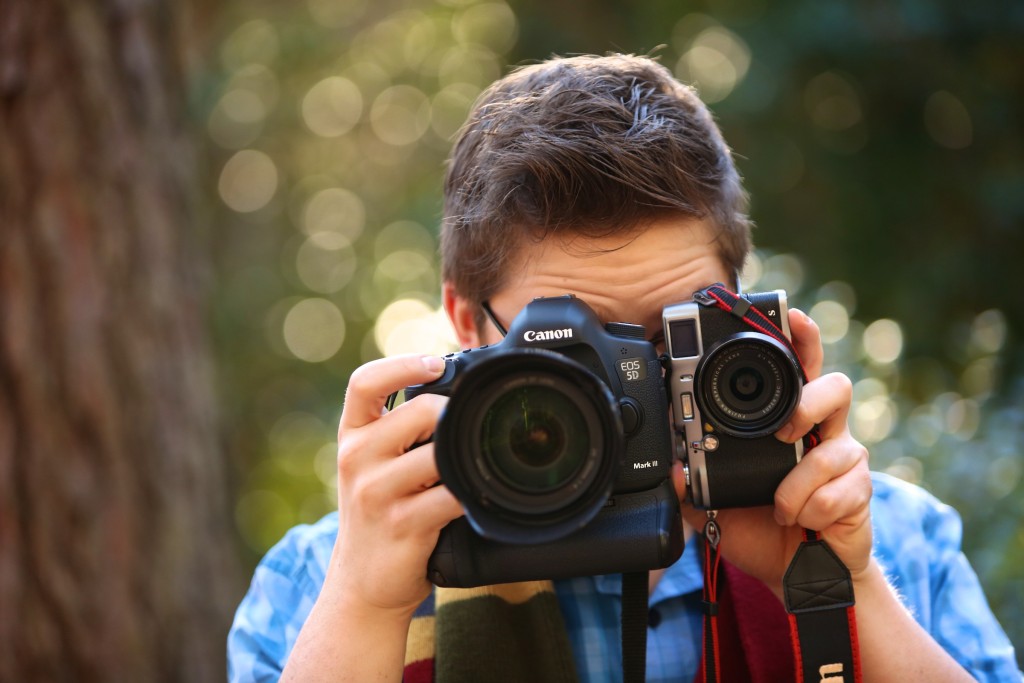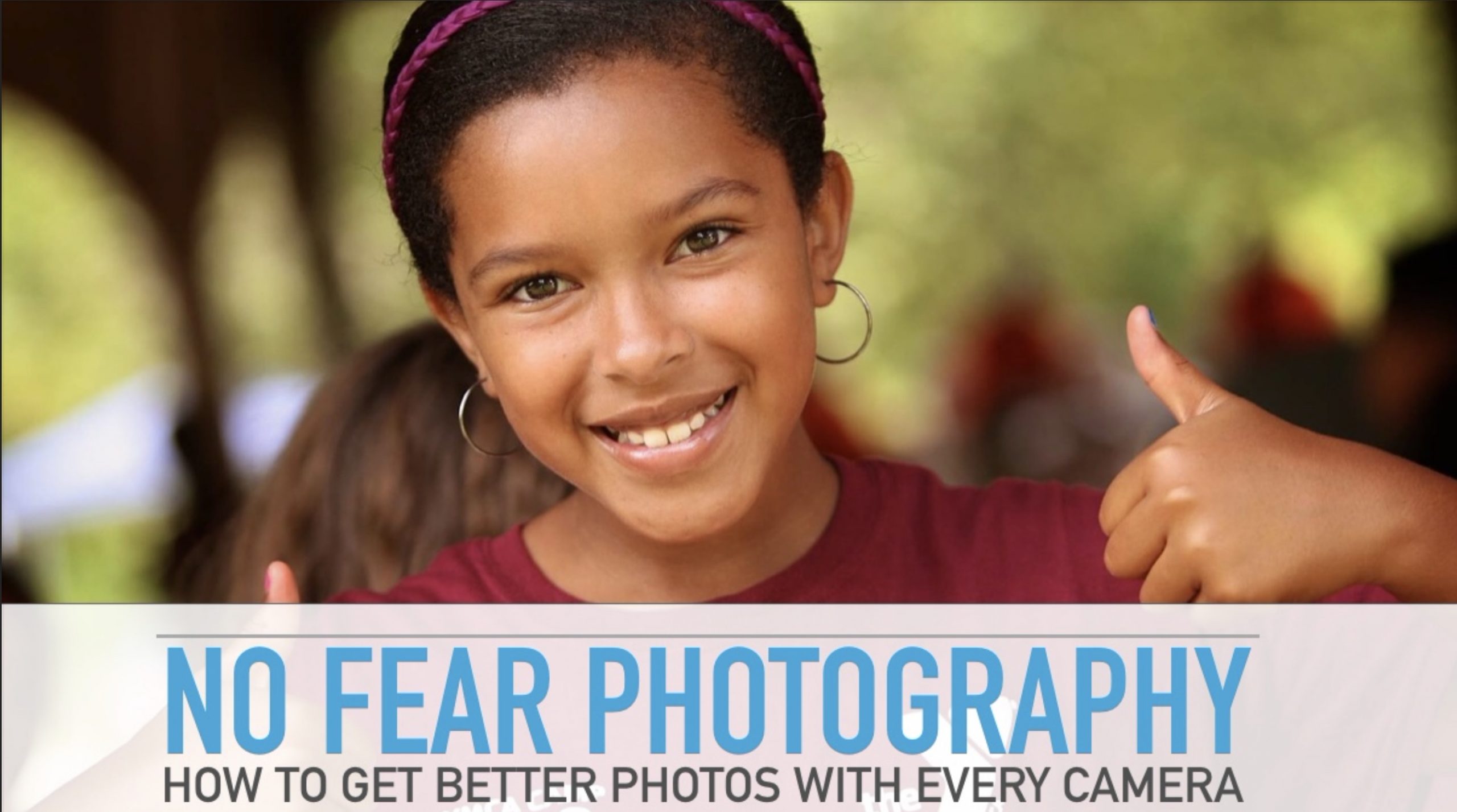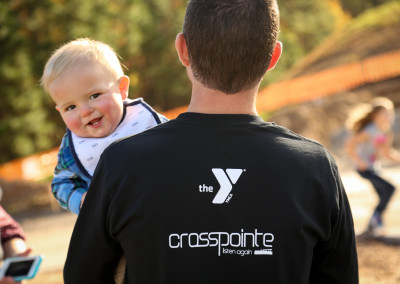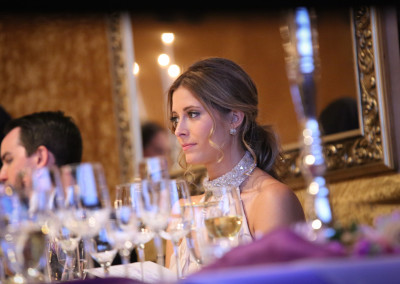Which Camera to Buy?
HuthPhoto Tips for Clients & PR Pros
Buying a New Camera? Let’s Make It Easy
Colin showing off the big Canon SLR style camera vs the small ‘mirrorless’ Fuji cameras we love.
Gimmicks vs Good Advice:
There’s a LOT of sales gimmicks, fallacies, YouTubers trying to get views, and just bad advice out there on camera buying.
- digital zoom (what you want: a real zoom with the lens is called an ‘optical zoom’)
- high frame rate to ‘catch all the action’
- X amount higher resolution is SO much better (ignore talk of megapixels)
- Instagram-like effect settings! (Instead, you can do that better in Instagram or a computer app)
- direct printing from camera to one brand of printer
- bundled kits full of stuff you’ll rarely use (what you really need: 2 good batteries, UV glass filter to protect the lens, 2 or more camera cards)
- “I switched from THIS brand to THAT brand” videos on YouTube (often for reasons YOU don’t need)
- built-in Wi-Fi/easy phone connection
- face recognition & eye focusing
- touchscreen focus (and anything that makes focusing easy)
- flip screen to get creative angles
- easy computer (webcam) hookup for upping your Zoom calls game
- better low-light focus & low-light image quality
Take Better Photos:
More than any amazing ‘feature’ of the camera, is you learning how to use it, and setting up your photo situation for success.
Check out my FREE hour talk “No Fear Photography” video at the bottom of the page (or HERE)

As the saying goes… “the best camera — is the one you have with you at the time”.
These folks will be perfectly happy with the memory they are snapping on their phones.
Is it OK to just use my phone camera?
- zoom in with a real lens
- take clearer photos in dim light
- give you more control of camera settings
— If you really enjoy photography, it’s a slam-dunk to upgrade from your phone camera.
Caveat: But do consider how big of a camera you are willing to cary around.
Quality:
General Tips:
big vs small… it’s up to you which camera has the features and quality you need— we love them both!
On Camera Sizes:
You’ll see 3 basic camera sizes/systems today:
- phone camera (really SO good now for snaps… but you want more, right?)
- mirrorless “4/3rds” cameras (smaller body & usually interchangeable lenses)
- SLR cameras (mostly replaced by mirrorless cameras now)
- See the ‘Putting It All Together’ section for details on each camera type.

What Makes A Camera Usable & Good Quality?
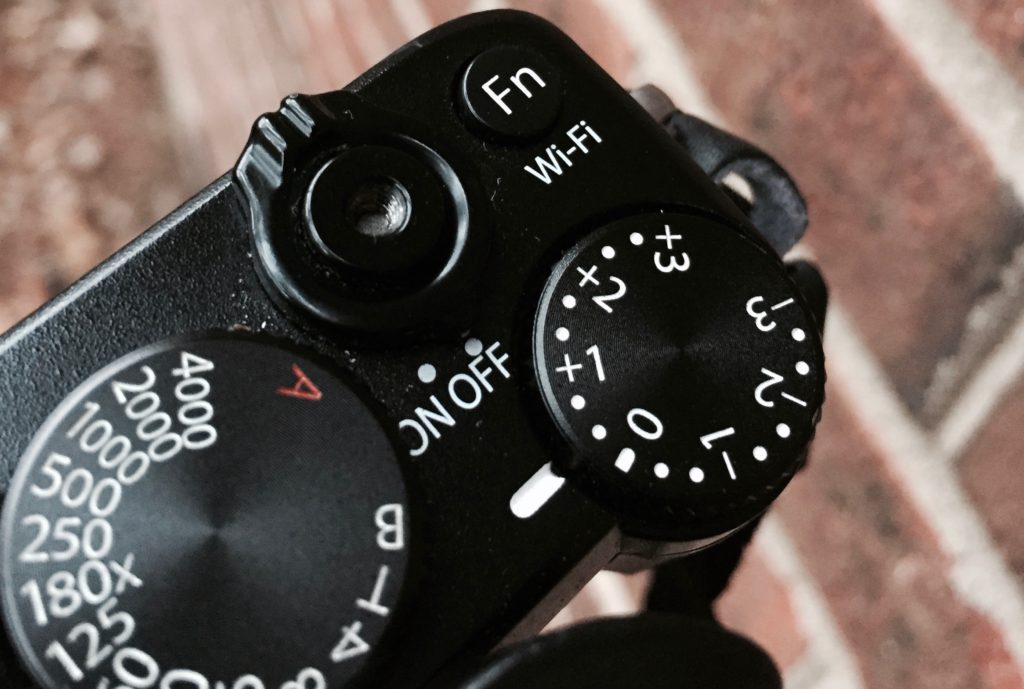
- Think about how big a camera you want to carry around
- How good it is in low light (research ‘high ISO noise’ and lens brightness ‘F Stops’ for your camera choices)
- Sensor Size = Key Quality Differentiator (more info below)
- In general, price usually does equate to quality
- How easy are the controls to find and set
- Does the physical camera build quality feel like it’ll take a few drops (if you are that sort of person)
- For action photos of kids/sports— fast/consistent focusing is another quality that really matters
- If you want to pursue a photo hobby, can the camera be set to Manual mode? Do you have to dig through 100 menus to change useful things?
The Pro Look:
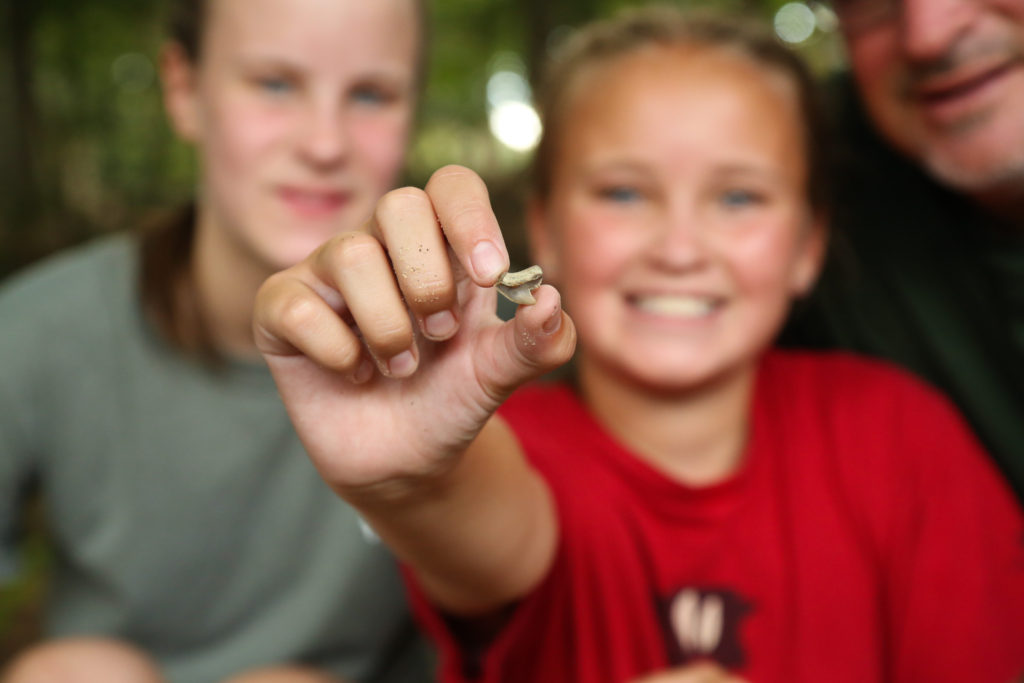
a mirrorless camera will give you that soft ‘pro look’ background that your phone is trying to fake with software
The amount a camera photo looks good in low light, and has that ‘pro’ look of a soft background and sharp subjects relates to the sensor size. The sensor is what actually records the photo inside your camera.
As you go up in camera size, the sensor gets bigger as well. Your phone’s camera sensor is tiny, your phone’s is around 6mm, but then an SLR sensor is 35mm in size. Each increase in size brings better quality images (and of course costs). See sensor size chart and more info HERE.
The Megapixel Myth:
Do Frames per Second Matter for Still Photos:
Get Great Light
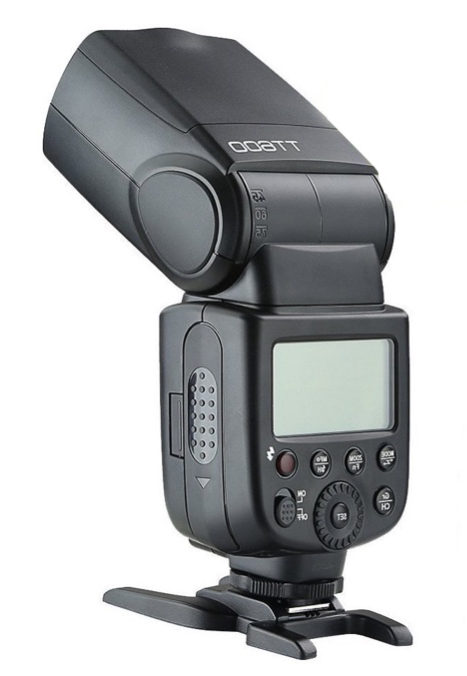
Putting It All Together: Summary
Sensor size = Better Quality
- Phone cameras have the smallest, so worst in low light, least ‘pro’ look to the shots.
- Mirrorless cameras (also called 4/3rds): a really nice compromise on size, quality in low light, pro looking images and since they are a premium camera, they tend to have better lenses, etc.
- Full-Frame Mirrorless cameras Current top in 2022 is Canon & Sony. Good in low light and the companies are focusing on making mirrorless cameras 100% now.
- SLR (like a Canon Rebel, etc) : pretty much dead. Go for mirrorless.
- Pro SLRs: This has been replaced with good quality full-frame mirrorless cameras. We own and love the Canon R5. The R6 is great too.
More light:
Easy to Use:
This is what’s lost in most camera design today… the simplicity is gone.
Look for a camera with easy to find key settings that really will improve your photos. The + – buttons for changing exposure, the white balance settings and the mode settings.
A camera should be easy to set, and, you know… just feel good to hold.
It’s Here: Mirrorless Cameras:
Well everyone…I said it was coming for years — and we’re here now.
If you want a more pro camera, (and aren’t a working sports shooter), you’re now looking first at ‘Mirrorless’ cameras.
This has been the biggest change since cameras went digital.
They are high-quality, easier to find settings on, more compact than SLRs were, and face/eye focus will give you more in-focus images — Love it, right??!
We love the Canon R series and the whole Fuji line, but Sony’s are also terrific and used by pros.
Ken Tip: Best Site to Research Cameras:
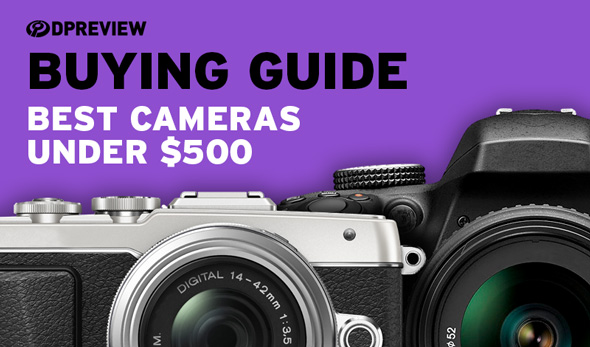
The absolute best site for researching cameras, seeing what’s coming, doing comparisons, and seeing example photos is Digital Photo Review.
What did I miss?
Ken Teaching: Take Better Photos
— Ken
Free Learning with Ken:
My FREE 1 Hour “No Fear Photography” Talk on Taking Better Photos
Get the handouts:
I created special, simple photo formula handouts for my class. They also included links to some of the ideas we discussed above.
Get the handouts from my 'No Fear Photography' talk:
How to organize all thos photos?
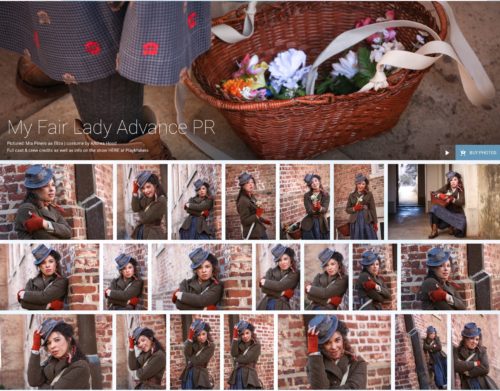
coming soon….
We hear so often from clients that they are just swimming in photos, so we consult with them (as well as RIT, the Durham Chamber, and other organziations) on how to easily manage photos coming in from a number of sources.
This setup can even include the nifty facial recognition, so you can automatically find all the best shots of your CEO, or that donor for the social post, etc.
Stay tuned….
Best Cameras 2022 Video:
Best Site to Research Cameras:

The absolute best site for researching cameras, seeing what’s coming, doing comparisons, and seeing example photos is Digital Photo Review.
Why key camera features matter:
HuthPhoto, LLC
Durham, NC
great photos | no stress
HuthPhoto: Corporate, Drone & PR Photography in Durham NC

#BullCity Proud
affiliations

socials
@HuthPhoto Instagram
